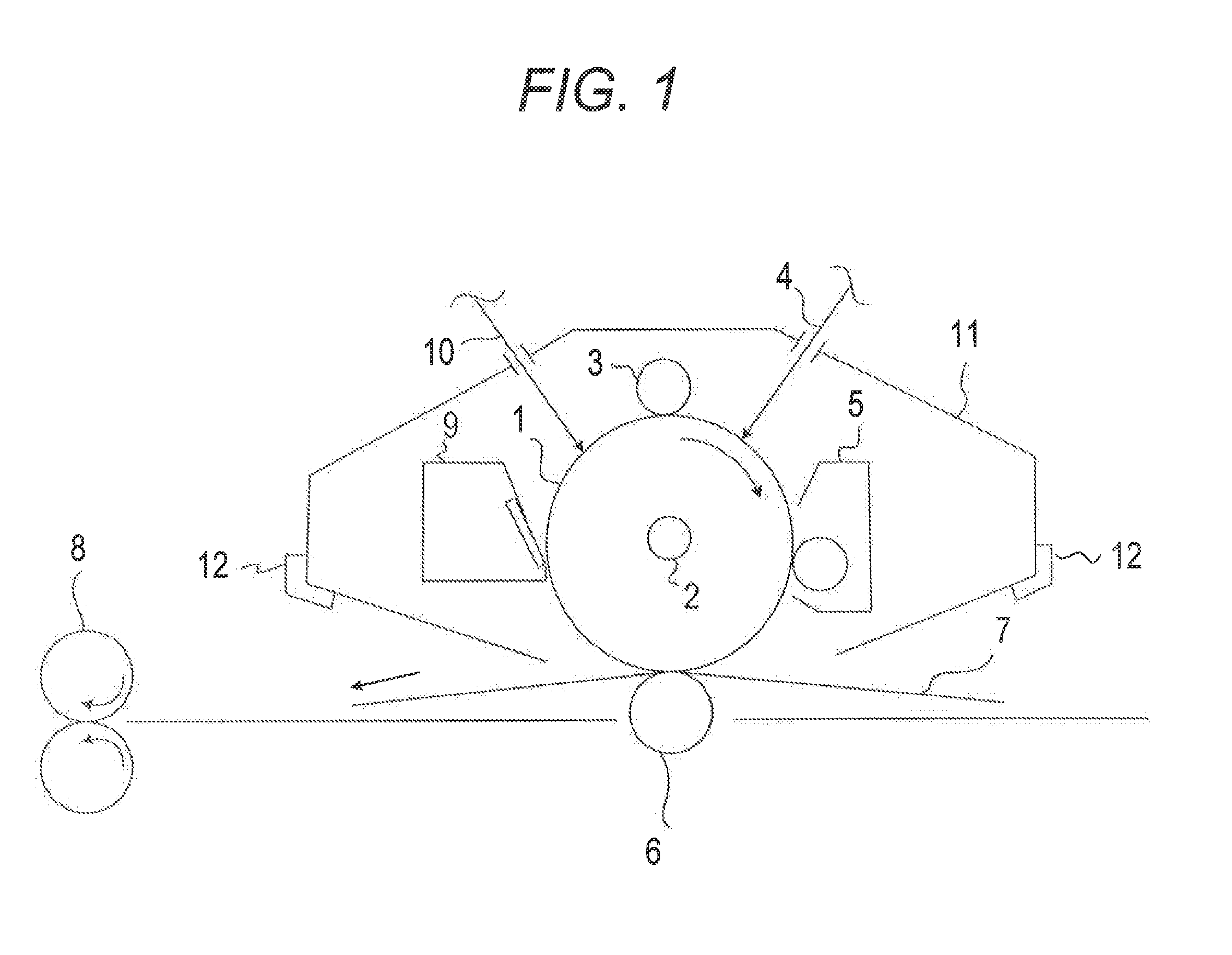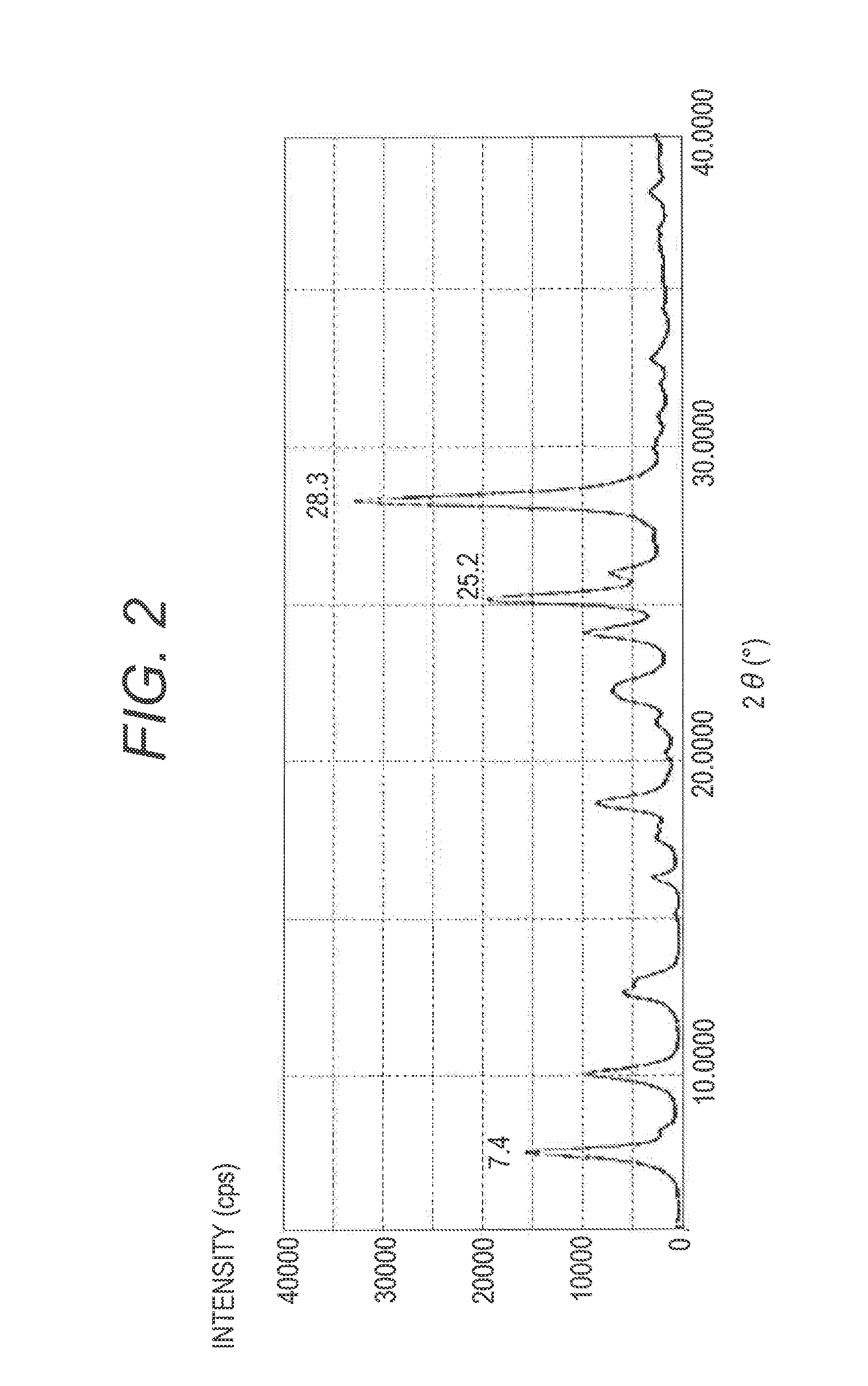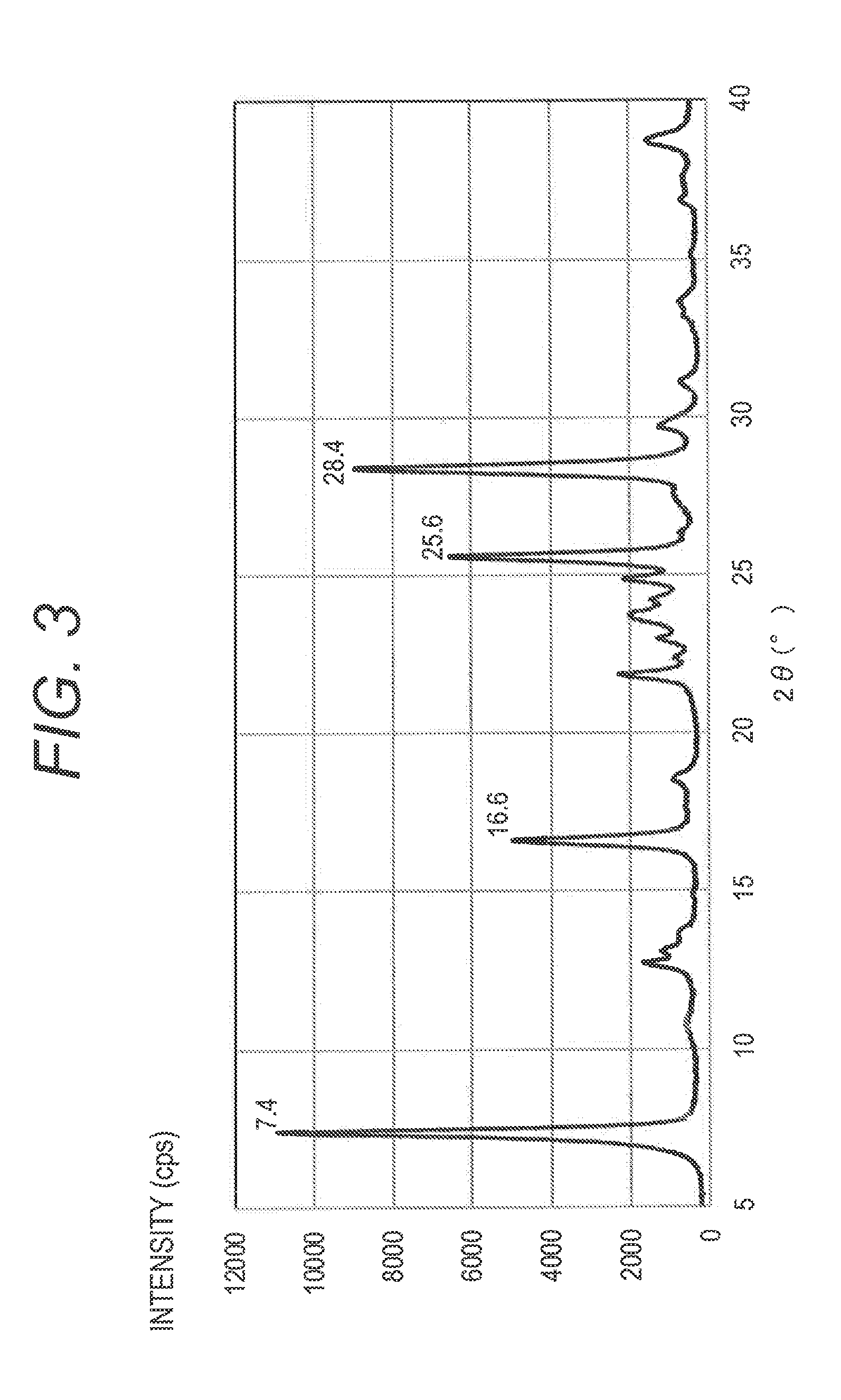Electrophotographic photosensitive member, method for producing electrophotographic photosensitive member, process cartridge and electrophotographic apparatus
a photosensitive member and electrophotography technology, applied in the field of electrophotographic photosensitive members, can solve the problems of image defects, density irregularities, image defects, etc., and achieve the effects of reducing density and irregularities, excellent sensitive characteristics, and easy to cause image defects
- Summary
- Abstract
- Description
- Claims
- Application Information
AI Technical Summary
Benefits of technology
Problems solved by technology
Method used
Image
Examples
synthesis example 1
[0124]Under a nitrogen flow atmosphere, 5.46 parts of phthalonitrile and 45 parts of a-chloronaphthalene were loaded to a reaction vessel and thereafter heated to a temperature of 30° C., and thereafter the temperature was kept. Next, 3.75 parts of gallium trichloride was loaded thereto at the temperature (30° C.). The moisture value of the mixed liquid in loading was 150 ppm. Thereafter, the temperature was raised to 200° C. Next, under a nitrogen flow atmosphere, the resultant was subjected to a reaction at a temperature of 200° C. for 4.5 hours and thereafter cooled, and when the temperature reached 150° C., the resultant was filtered to provide a product. The resulting product by filtration was dispersed in and washed with N,N-dimethylformamide at a temperature of 140° C. for 2 hours, and thereafter the resultant was filtered. The resulting product by filtration was washed with methanol, and thereafter dried to provide 4.65 parts of a chlorogallium phthalocyanine pigment (yield:...
synthesis example 2
[0125]The chlorogallium phthalocyanine pigment obtained in Synthesis Example 1 (4.65 parts) was dissolved in 139.5 parts of concentrated sulfuric acid at a temperature of 10° C., the resulting solution was dropped in 620 parts of ice water under stirring, for reprecipitation, and filtered using a filter press. The resulting wet cake (product by filtration) was dispersed in and washed with 2% ammonia water, and thereafter filtered using a filter press. Next, the resulting wet cake (product by filtration) was dispersed in and washed with ion-exchange water, thereafter filtration using a filter press was repeated three times, and thereafter a hydroxygallium phthalocyanine pigment (hydrous hydroxygallium phthalocyanine pigment) having a solid content of 23% was obtained (acid pasting treatment).
[0126]Next, 6.6 kg of the resulting hydroxygallium phthalocyanine pigment (hydrous hydroxygallium phthalocyanine pigment) was dried using a Hyper-Dry dryer (product name: HD-06R, frequency (oscil...
example 1-1
[0133]The hydroxygallium phthalocyanine pigment (0.5 parts) obtained in Synthesis Example 2 and 10 parts of N,N-dimethylformamide were subjected to a wet milling treatment by a ball mill together with 20 parts of glass beads having a diameter of 0.8 mm under conditions of room temperature (23° C.) and 120 rpm for 400 hours. A gallium phthalocyanine crystal was taken out from such a dispersion by using N,N-dimethylformamide, and filtration was conducted and a filter was sufficiently washed with tetrahydrofuran. A product taken out by filtration was dried under vacuum to provide 0.45 parts of a hydroxygallium phthalocyanine crystal. The powder X-ray diffraction diagram of the resulting crystal is illustrated in FIG. 2. It was confirmed by 1H-NMR measurement that the content of N,N-dimethylformamide in the hydroxygallium phthalocyanine crystal obtained in the present Example was 1.4% by mass in terms of the ratio of proton. N,N-dimethylformamide is compatible with tetrahydrofuran, and ...
PUM
| Property | Measurement | Unit |
|---|---|---|
| Temperature | aaaaa | aaaaa |
| Temperature | aaaaa | aaaaa |
| Percent by mass | aaaaa | aaaaa |
Abstract
Description
Claims
Application Information
 Login to View More
Login to View More - R&D
- Intellectual Property
- Life Sciences
- Materials
- Tech Scout
- Unparalleled Data Quality
- Higher Quality Content
- 60% Fewer Hallucinations
Browse by: Latest US Patents, China's latest patents, Technical Efficacy Thesaurus, Application Domain, Technology Topic, Popular Technical Reports.
© 2025 PatSnap. All rights reserved.Legal|Privacy policy|Modern Slavery Act Transparency Statement|Sitemap|About US| Contact US: help@patsnap.com



